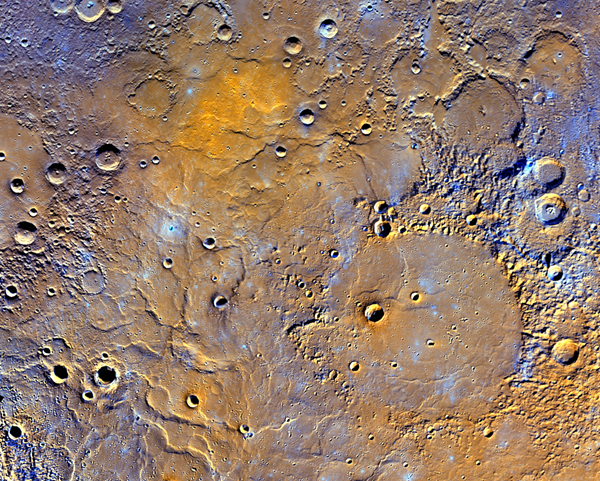If you walked into a home and the kitchen was strewn with dusty old copies of National Geographic, you’d probably wonder where they came from. That’s basically what Mercury looks like. Well, except instead of magazines, it’s a strange distribution of rocks on the planet’s surface. But like the magazines, scientists think the rocks came from Mercury’s basement.
A team of NASA scientists led by Asmaa Boujibar subjected a Mercury-like substance to different high pressures and temperatures. When they varied the temperatures and pressures of the rocks in the pressure cooker to levels usually seen deeper inside a planet, they were able to reproduce a spectrum of material similar to what you’d find on Mercury’s surface, as measured by NASA’s Mercury Surface, Space Environment, Geochemistry, and Ranging (MESSENGER) spacecraft that orbited the planet
Mercury’s strange surface has been a motivator for some of NASA’s scientists. “You find things that don’t fit with your preconceived notions and suddenly there’s a lot more questions to ask,” said Ralph McNutt, MESSENGER project scientist who did not work on this particular experiment. “It’s the reason we explore.”
The team recreated conditions like the boundary of Mercury’s core and mantle with pressures 30,000 times higher and temperatures 1200 to 1800 degrees Celsius hotter than your own basement. They used a powder designed to match the composition of enstatite chondrites, rare meteorites and popular stand-ins for Mercury because of their similar chemical composition, according to the results presented today at the Goldschmidt Conference on geochemistry in Yokohama, Japan. (The paper is available here.)
Finding basement rocks on Mercury’s surface isn’t quite as strange as it sounds, though. The edge of Mercury’s core is only around 400 kilometers below the surface, according to NASA, so the core makes up around 80 percent of the planet’s radius (on Earth, our core/mantle boundary sits closer to 3000 kilometers deep, around halfway down). We’re not sure how Mercury got a core so shallow that core material ends up on the surface, but other scientists have speculated that maybe once Mercury was a much bigger planet whose outer layers were stripped away by violent collisions with early planets that aren’t there anymore, according to a story reported in Popular Mechanics.
McNutt already has some ideas for what’s next for studying the planet.
“Getting a lander down on Mercury, perhaps at the poles and seeing the condition of the water ice,” he said. “but you’ve gotta convince people it’s a worthwhile thing to pay for.”










